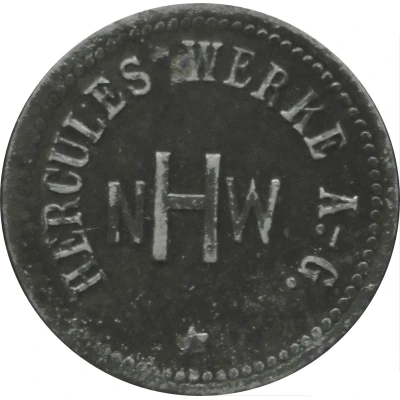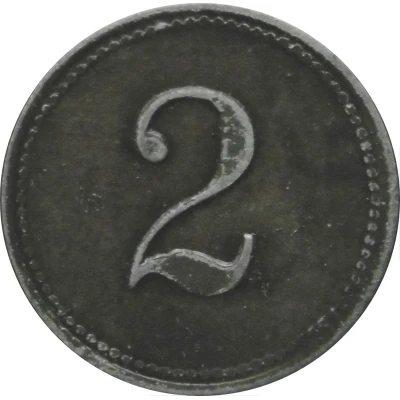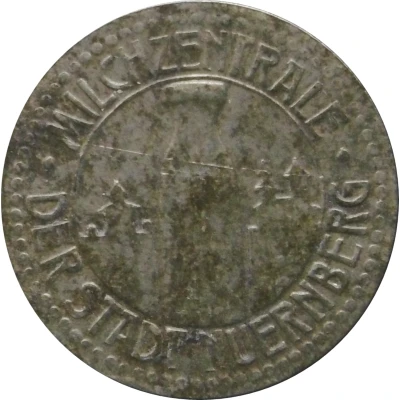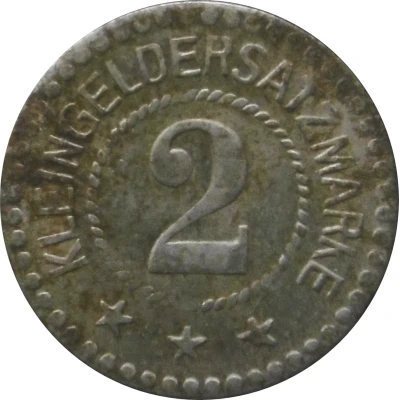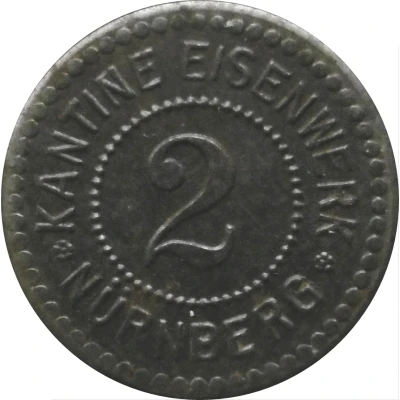
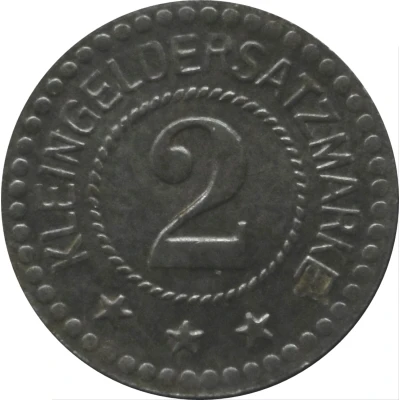

© Willem63 (CC BY-NC-SA)
2 Pfennigs - Nürnberg (Kantine Eisenwerk) ND
| Iron | 2.0 g | 18.0 mm |
| Issuer | City of Nuremberg (Federal state of Bavaria) |
|---|---|
| Type | Standard circulation coin |
| Value | 2 Pfennigs (2 Pfennige) (0.02) |
| Currency | Mark (1914-1924) |
| Composition | Iron |
| Weight | 2.0 g |
| Diameter | 18.0 mm |
| Thickness | 1.2 mm |
| Shape | Round |
| Technique | Milled |
| Orientation | Medal alignment ↑↑ |
| Demonetized | Yes |
| Updated | 2024-10-04 |
| Numista | N#288314 |
|---|---|
| Rarity index | 97% |
Reverse
Pearl rim, legend surrounding beaded circle with denomination centered
Script: Latin
Lettering:
KLEINGELDERSATZMARKE
2
★★★
Edge
Plain
Comment
Menzel: BBBThe Nürnberg Tafelwerk was an iron rolling mill, founded in 1875 by Julius Tafel. It was one of the large industrial complexes in Nuremberg and what was once the largest German welding iron mill from the 19th and 20th centuries. After the death of the company founder, in 1900 the name was changed from "Julius Tafel & Co. (Tafelwerk)" to "Eisenwerk Nürnberg AG". The heyday of the plant was over well before the Second World War, and the pressure of competition in the industry grew steadily greater. In 1975, the year of the company's 100th anniversary, the now obsolete plant was closed.
Interesting fact
One interesting fact about the 2 Pfennigs - Nürnberg (Kantine Eisenwerk) ND coin is that it was made of iron, which was a unusual choice of material for coins at the time. Most coins were made of copper, silver, or gold, but the use of iron was seen as a way to reduce the cost of production and make the coin more accessible to the general population. This decision was also a reflection of the economic and political climate of the time, as Germany was experiencing significant inflation and economic challenges in the early 20th century. Despite being made of a less valuable material, the coin still maintained its value and was widely used in circulation.
